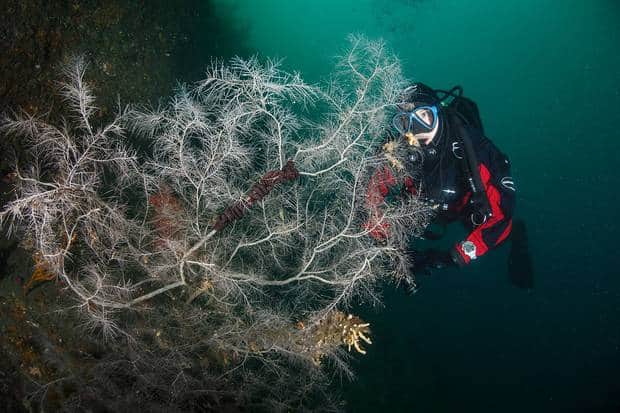Sophie Roselt, instructor and skipper at Dive! Tutukaka Favourite sites: Tie-Dye Arch and Blue Maomao Arch, Poor Knights Islands
The arches are almost on opposite ends of the spectrum – Blue Maomao is shallow & calm, while Tie-Dye is deeper and more exposed. They’re both home to incredible amounts of fish and have beautiful light displays from the unique formation of volcanic topography.
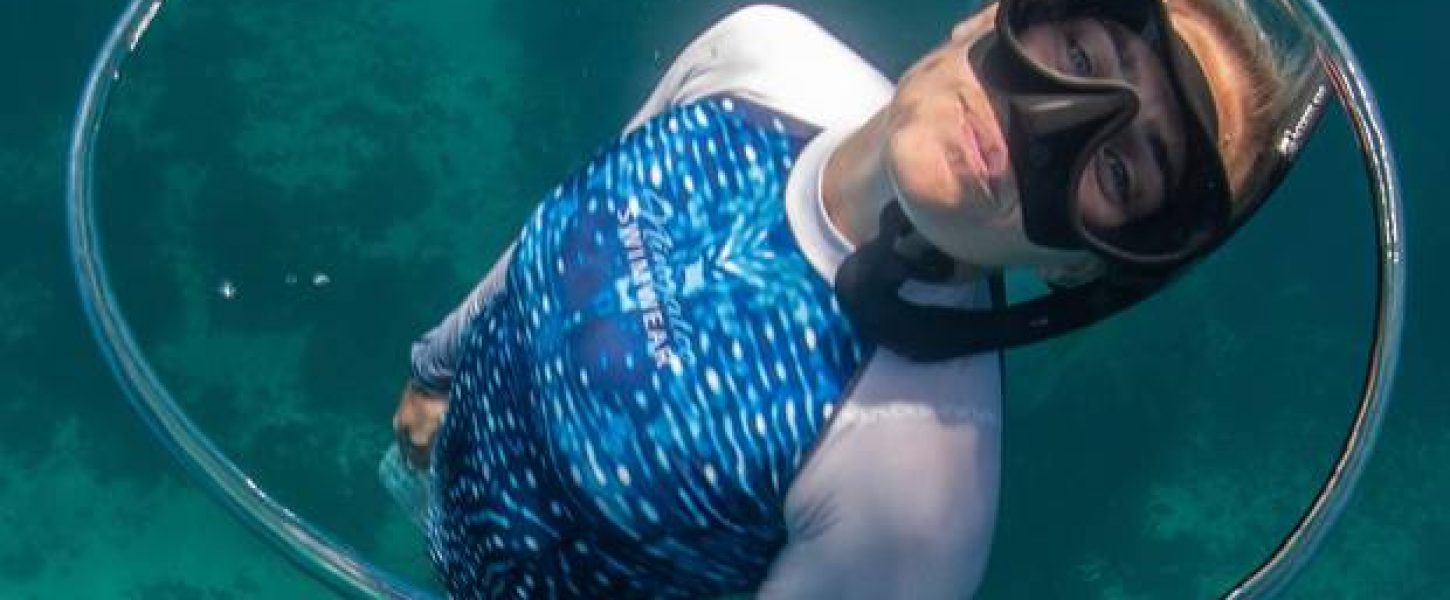
kipper and dive instructor Sophie Roselt of Dive! Tutukaka. Photo / Supplied
Blue Maomao Arch is well known for its large congregation of blue maomao which school in the thousands. On a good day, you can’t even see anything but fish. The fish come and go and even on days when the Arch is empty it’s still so beautiful; the walls are covered in vibrant encrusting life and you can never not find something cool to look at. It’s best when there is little swell, it is quite shallow (5-10m) so it’s best to have calmer conditions so you’re less affected by surge. The visibility can range from 10 to 40 metres depending on the time of year. Temperature in the winter is around 15C and summer can get to 22C.
Tie Dye Arch is a deep underwater Archway which is found at the Pinnacles. It sometimes has strong current and with that brings a faster-paced exciting dive. There can be hundreds of stingrays in there at one time, along with bronze whaler sharks and kingfish bigger than me! It’s always exciting diving there, with it being more exposed it feels wilder to dive there. Make sure to check the tides as that can affect the current greatly. It’s wise to go with a guide if you haven’t been there before.
Diving in New Zealand is world class. I’ve seen an endless list of incredible things ranging from tiny seahorses to giant pelagic manta rays, turtles, orca, humpback whales and much, much more. At the Poor Knights in particular, being influenced in the summer months by the warm East Australian Current, we have an exciting mix of warm tropical water species swimming among our New Zealand residents. The excitement factor is high in these months as you really never know when you’ll see a turtle or manta ray swimming out of nowhere.
By diving.co.nz
Jo Thompson, owner Yukon DiveFavourite site: Ngaio Rock, Poor Knights Islands

Jo Thomson, owner of Yukon Dive, aboard her dive boat G Force. Photo / Supplied
Whilst I probably have about 10 favourite dives sites at the Poor Knights, I think my absolute favourite would have to be Ngaio Rock/Reef located off the Southern end of Aorangi Island, benefiting from the current that flows through the Labrid Channel in South Harbour.
It is at the top of my list with an abundance of gorgonian fans around 12-15 metres, gorgeous sponges and colour everywhere. We have seen so many exciting things here – mola mola with schooling kingfish, crested weed fish, orca and even a moorish idol who was definitely out of place.
The Poor Knights is impressive above and below the water – you don’t need to be a diver to appreciate it. The life at the sites all around the islands is so exciting to see. It’s like nowhere else in the world. I love the topography underwater, the life along the rock and sand line really interests me and I love exploring swim-throughs, caverns and arches.
Every season is different and has something to interest divers and snorkellers, be it large schools of blue maomao, trevally, or two-spot demoiselles or big mooching snapper, some as old as 80 years. Or at the other end of the spectrum, brightly coloured nudibranchs by the dozens, tiny triplefins and critters galore.
By yukon.co.nz
Tara Kingan, instructor at Dive Zone Whitianga Favourite site: Danger Rocks, Mercury Bay, Coromandel
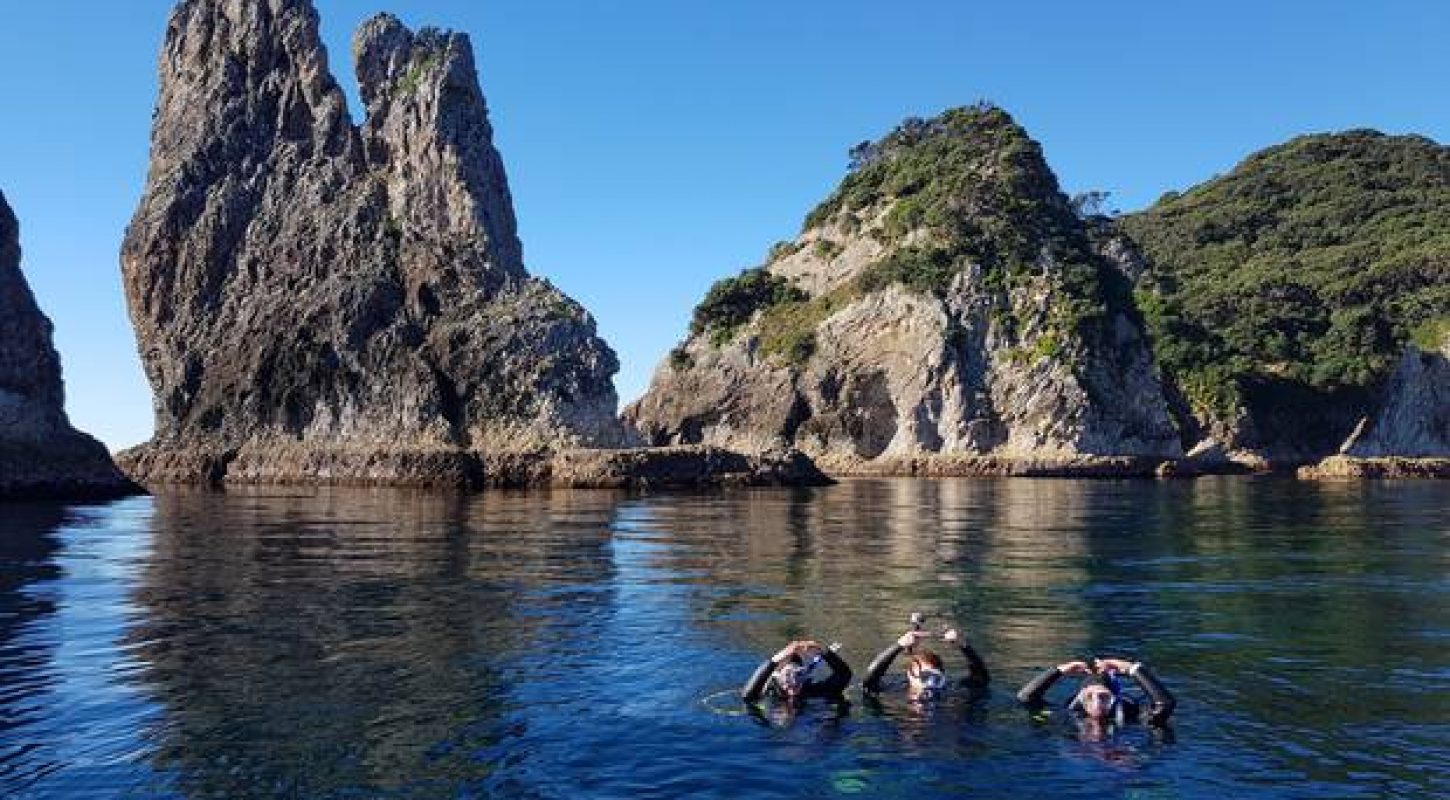
Divers give the ‘OK!’ signal from the water at the Alderman Islands, Mercury Bay in the Coromandel. Photo / Supplied
I have dived in some spectacular spots over the past few years, from the Poor Knights down to Lake Taupō. One of my most memorable dives has to be in Mercury Bay, Coromandel, at Danger Rocks where I had the most stunning dive with the biggest schools of fish in blue, blue water.
The fish life is amazing, as is the bottom topography, which consists of a lot of jagged rocks and crevices, and long healthy kelp that leads off to a sandy bottom at a depth of 40 metres.
You can see massive schools of fish at this spot such as pink maomao, blue maomao, two-spot demoiselle, kingfish as well as sting rays and eagle rays – and many more different types of fish species. You may even have the odd friendly shark join you.
During the summer the temperature is around 21C and during winter it drops down to about 15C.
The only way to get to this spot is by boat, but it is a fast run out in Dive Zone’s Mystery Machine – you can be there in 30 minutes. You have to dive this site at slack tide as there can be a strong current that runs through and you will need to have a calm sea as well.
divezonewhitianga.co.nz
Tanya Bijl, instructor Paihia DiveFavourite sites: Cathedral Cave, Deep Water Cove
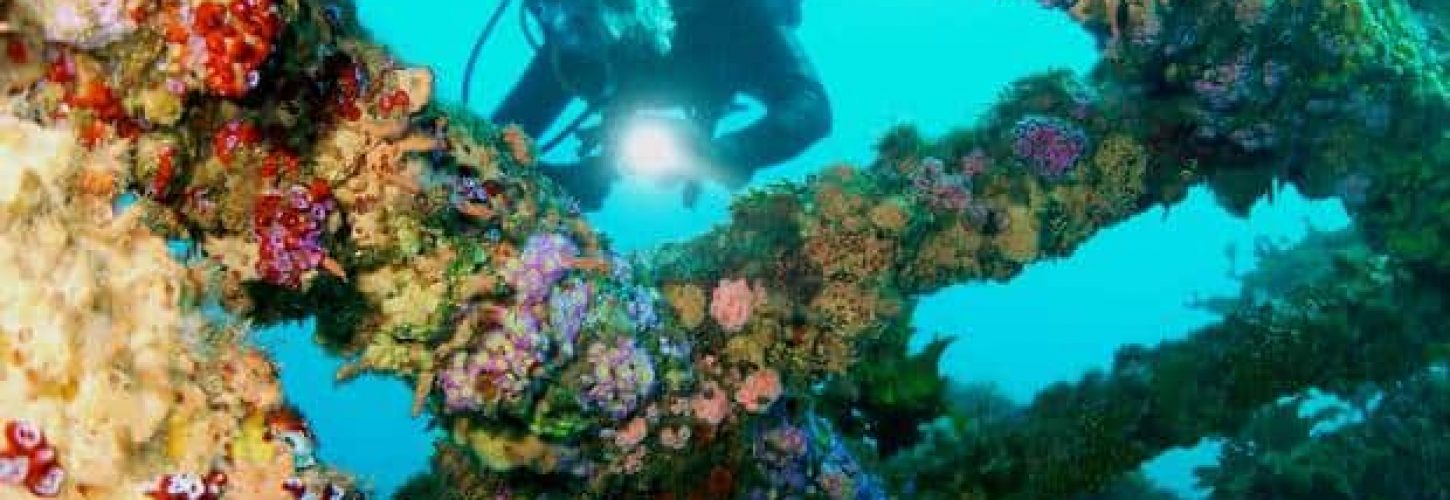
Tanya Bijl inspects the coral life on a wreck dive. Photo / Craig Johnston
My favourite is around the hole in the rock, at Cathedral Cave, but this spot is not an all-year option. To dive any time of the year, I reckon Deep Water Cove has proven itself as being a true gem.
It has been a marine reserve since 2010 and over the eight years I have been diving there, the changes are amazing. No more barren reef from kina, but instead healthy kelp, sponges, juvenile and adult fish. The amount of big snapper, crayfish and packhorse are great. They know they are safe and love to show themselves off to us divers.
Of course the HMNZS Canterbury is a true highlight of this cove. You can do lots of exploring on it over several dives. It’s a massive wreck that is in such good condition. Sunk for wreck diving, it blows people minds when taking them down to have a look and explore.
Deep Water Cove is very sheltered, the only weather you need to be aware of is a westerly to north-westerly swell and wind. This will go straight into the cove.
Travelling through the islands on our way to Deep Water Cove is always amazing, it’s such a beautiful paradise. And then when you go underwater, and the abundance of fish life appears, it is truly magical. The fish are so friendly that they’ll come up to meet you and some swim with you for the whole dive.
divenz.com
Simone McKirdy, instructor, skipper and owner Descend Scuba Diving Favourite site: Milford Sound
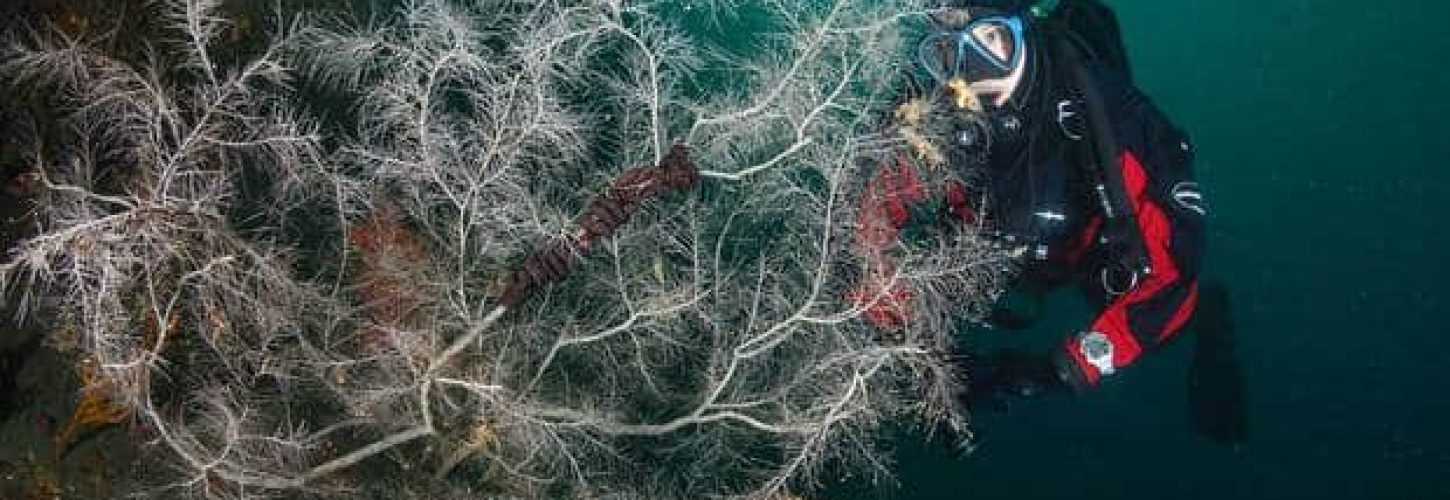
Diver Simone McKirdy inspects a black coral tree in the Milford Sound. Photo / Grant Thomas Photography
I must have accumulated thousands of dives in Milford Sound and know the area like my back pocket. For me, it is a bit like visiting your favourite underwater pets. I know the crack Boris the eel hides in and I know where to find the elusive seadragons.
Of course, no dive is ever the same and on most dives we see either dog or carpet sharks and the occasional seven-gill shark and if we are lucky we get visited by a playful seal. We also have the chance to see stingrays, eagle rays, a great variety of fish. My best-ever dives there were being visited by the resident bottlenose dolphins.
The Milford Sound underwater environment has a totally unique ecosystem different to any other diving in New Zealand. A phenomenon called deep water emergence where deep water species migrate to shallow levels can be observed here.
Due to the high rainfall in the area and the fiord being very narrow, we get a near-permanent freshwater layer that sits on top of the ocean water. This freshwater layer can be nearly non-existent after a week of no rain, but mostly ranges from about 1-5 metres thick. As the freshwater travels through the rainforest, cascading into the fiord through thousands of waterfalls, it collects tannins from the decomposing plant matter, which stains it a tea-brown colour.
This tannin-stained layer blocks enough sunlight that deep-water species get tricked to migrate to shallower levels perfect for us divers to see. The most famous deep-water species we can see are the black coral trees. These trees are white in appearance but called black coral after the skeleton, which turns black when a tree dies.
descend.co.nz

